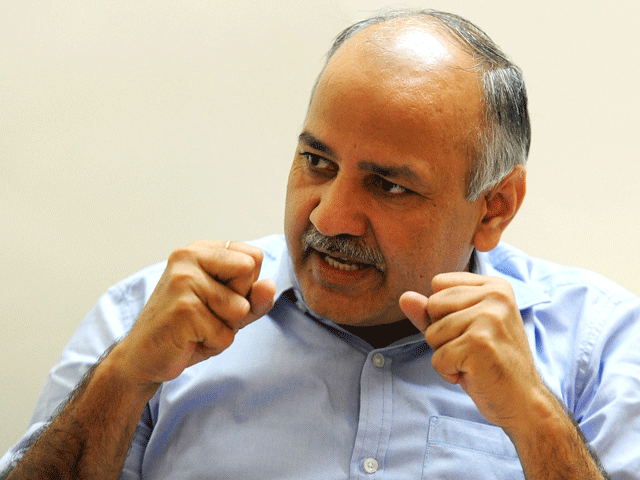Should you reverse mortgage your home in wake of fall in interest rates? Find out
Reverse mortgage is in a way a mirror image of home loans, where you take a lump sum loan and repay it through instalments.
 There was a lot of expectation when reverse mortgage, a scheme that allows people aged 60 and above to mortgage their self-occupied home in return for a loan—paid in instalments or lump sum— was introduced in 2007.
There was a lot of expectation when reverse mortgage, a scheme that allows people aged 60 and above to mortgage their self-occupied home in return for a loan—paid in instalments or lump sum— was introduced in 2007.But user interest in this product has remained low, primarily because of the high interest rates on reverse mortgage products. "Reverse mortgage makes more sense in economies with low interest rates," says Sriram Kalyanaraman, MD and CEO, National Housing Bank (NHB).
Reverse mortgage is in a way a mirror image of home loans, where you take a lump sum loan and repay it through instalments.
The 'cheapest' plans
The interest rates on reverse mortgage plans are still higher than home loan rates.
IOB : 9.40%
United Bank : 10.70%
IDBI Bank : 10.85%
PNB : 11.05%
SBI : 11.90%
Source: BankBazaar
In reverse mortgage, you take loans in instalments and repay the lump sum later. But interest rates for reverse mortgage are much higher than those for home loans, though not without reason. For instance, banks have to pay tax on the accrued interest, even though they receive the payments from the borrowers much later, which increases their costs. "In reverse mortgage, banks have to take over the house and sell it, which is a costly and time-consuming process," says Adhil Shetty, CEO, BankBazaar.
The bank can recover the loan only upon the death of the borrower, and there is always the possibility of the borrower outliving the loan tenure, which can postpone the bank's recovery of the loan. Because of this added risk, banks also offer a lesser loan to value (LTV) in the case of reverse mortgages. "For reverse mortgage, banks usually cap the LTV value at 40% of the value of the house," says Dipak Samanta, Founder and CEO, iServeFinancial.
Despite these drawbacks, the fall in interest rates, has made the product more appealing. "At current rates, it is a viable option for retired persons to go for reverse mortgage products," says Samanta. The fall in interest rates, especially bank fixed deposit (FD) rates, has brought the annual income of several senior citizens under stress. If one had invested Rs 50 lakh in bank FDs and was getting Rs 4.5 lakh annually (9% interest), it is likely to be down to around Rs 3.5 lakh now (at 7%). Reverse mortgage can help manage this income shortfall. Also, the NHB in the process of making the product more user-friendly, says Kalyanaraman.
Who should go for it?
"Reverse mortgage works well for families where kids are well settled and don't need the parents' house," says Brijesh Parnami, ED and CEO, Essel Finance Wealth Zone. Similarly, it is also a good option for retirees facing regular shortfall in their annual income and expenditures.
However, experts say that if the short fall is small, it is better to manage it using alternative routes than opting for reverse mortgage. "If the short fall is small, increased tax efficiency—for instance, moving from bank FDs to short-term debt funds—may serve the purpose," says Shetty. "Small shortfalls can be mitigated by increasing the portfolio risk a bit and going for balanced funds. Anyway, you are putting the house on risk with reverse mortgage," says Parnami.
The suitable plan
Reverse mortgage can be of two types: Either the bank can pay you money at regular intervals— monthly, quarterly or annually—or, it can pay you a lump sum, which you can use to buy a pension plan from life insurance companies. It is better to avoid the second option, say experts.
Pension from insurance companies is fixed forever, while banks usually review the annuity amount every five years and there is a probability of the annuity going up after five years. Also, regular payouts received from banks are treated as loans and, therefore, will be tax-free in your hands. Pension from life insurance companies, however, is treated as income and you will have to pay tax at marginal rates.
Things to know about reverse mortgage
* Only citizens aged 60 or more are eligible. For married couples, jointly taking the loan, one of them should be above 60. Some banks may have additional conditions —joint applicant to be above 55, etc.
* Reverse mortgage is allowed only against self-occupied residential property. The title of the property should be clear—there should not be legal, ownership issues with the property.
* The tenure for which the loan is granted varies across banks, but the maximum period for which is its allowed is 20 years. The loan tenure usually is the same as the residual life of the property.
* Banks can recover the loan only on the death of both the borrowers. For example, the loan tenure is 20 years and the borrowers live for 25 years, the lender can only recover the loan after 25 years.
* The heirs have the right to settle the loan—principal and interest. If they decide not to settle it, the house is sold and any proceeds in excess of the sum due to the bank, is returned to the legal heirs.
* The documentation is similar to that of a housing loan. Just like other loans, the processing fee needs to be borne by the borrower. The borrower also has to cover all the home insurance premiums.
Arun Gupta
 NEW DELHI:Union minister for housing
NEW DELHI:Union minister for housing 
 NEW DELHI: The government will give a benefit of `. 2.4 lakh to first-time home buyers with taxable income below Rs 18 lakh a year, which would be a game changer for the sector, Housing and Urban Poverty Alleviation Secretary Nandita Chatterjee said.
NEW DELHI: The government will give a benefit of `. 2.4 lakh to first-time home buyers with taxable income below Rs 18 lakh a year, which would be a game changer for the sector, Housing and Urban Poverty Alleviation Secretary Nandita Chatterjee said. 


 NEW DELHI: Land and
NEW DELHI: Land and  NEW DELHI: The
NEW DELHI: The 